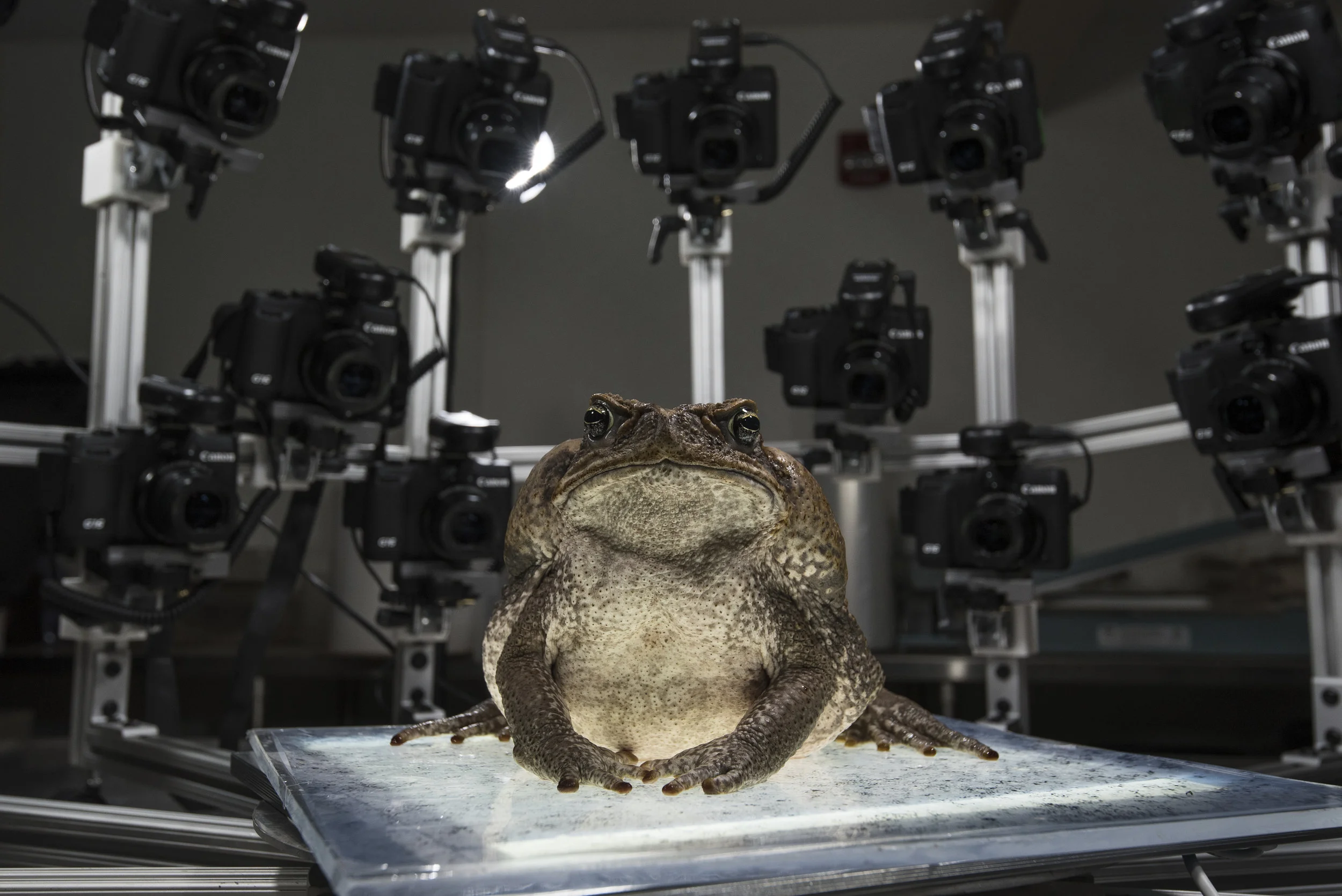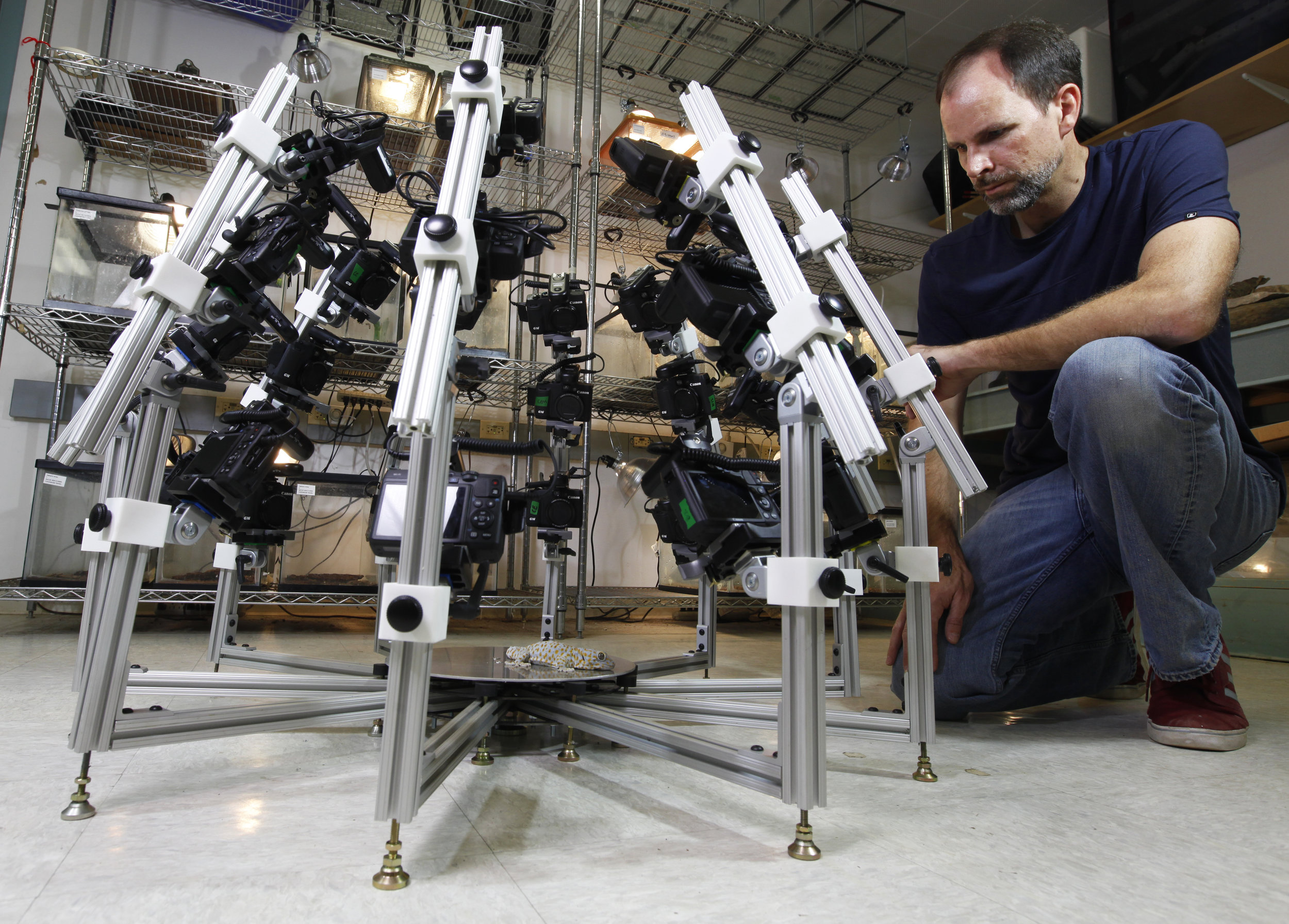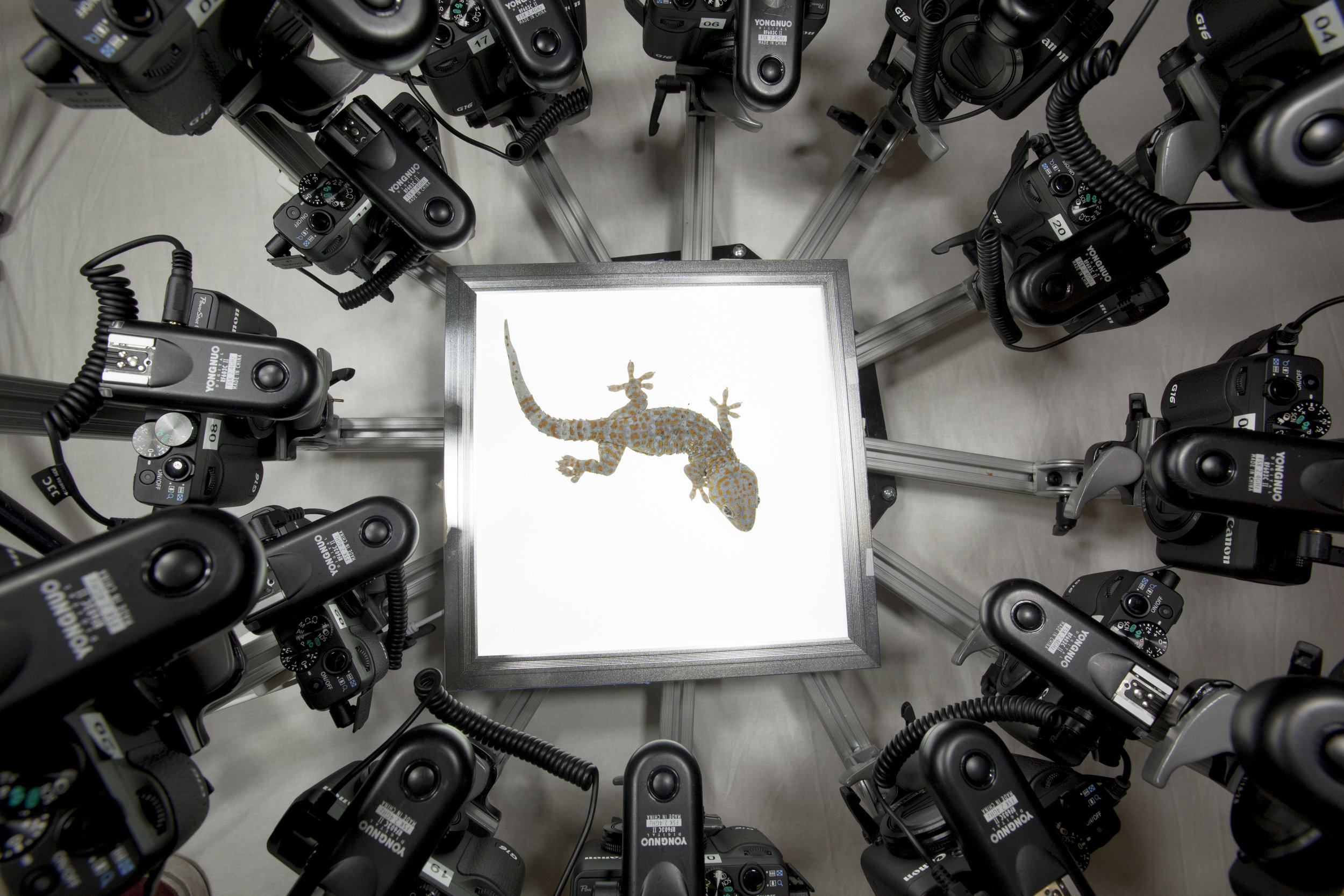The Digital Life team uses photos, videos, data (e.g., morphometrics), and other scanning methods (e.g., photogrammetry, ct-scanning) to create accurate, full-color 3D models of animals. Further, we also are beginning to employ software and machine-learning approaches to accurately reconstruct the movements of animals. Our primary software for 3D model construction is Blender, but we also use various other software packages, such as Houdini, Meshroom, Capturing Reality, and others. One of our primary techniques is digital photogrammetry. The concept of photogrammetry dates back hundreds of years, but this practice has flourished in the past few years. Digital photogrammetry consists of integrating digital images, such as from a camera to create complex 3D geometries that are overlaid with a 3D color map (also known as a UV map). The results from photogrammetry can be striking, and can result in startlingly realistic 3D scenes with rich and detailed colors.
One of the key elements of our approach is the Beastcam technology, which is a platform technology that is designed to photo-capture live animals using multiple cameras. The technology was created at the University of Massachusetts at Amherst by Duncan J. Irschick and collaborators, and has been used to create 3D models of organisms as diverse as sharks, lizards, snakes, frogs, flowers, fungi, and invertebrates. The defining features of Beastcam devices are portability, ease of use, and flexibility. Because organisms vary greatly in size, the Digital Life team has created devices of varying sizes, ranging from the original handheld Beastcam, the MACRO (for organisms ~1-9 inches in length), the ARRAY (~4-16 inches), and the STAND (~ 16-70 inches).
The original Beastcam - UMASS Amherst undergraduates Dylan Briggs and Kasey Smart are shown taking images of a Tegu using the original handheld Beastcam.
The Beastcam ARRAY - Duncan J. Irschick is shown using the Beastcam ARRAY to scan a tokay gecko. This system is useful for intermediate sized organisms (4-16 inches)
The Beastcam MACRO - This 24-camera system is compact and designed for 3D capture of small organisms ranging in 1-9 inches in length.
All of the Beastcam technology is designed to be field-portable, and can be easily transported in cases, such as the one shown here with UMASS undergraduate Zachary Corriveau






